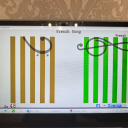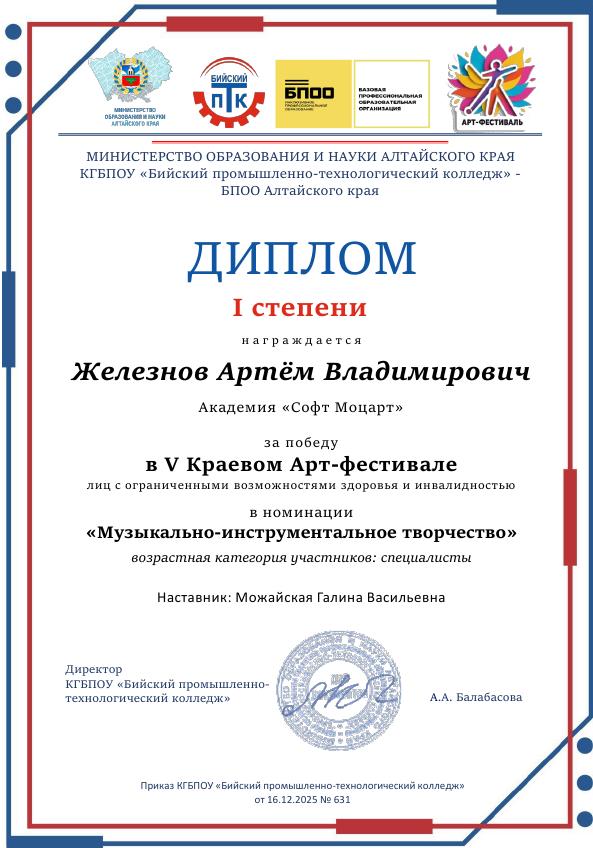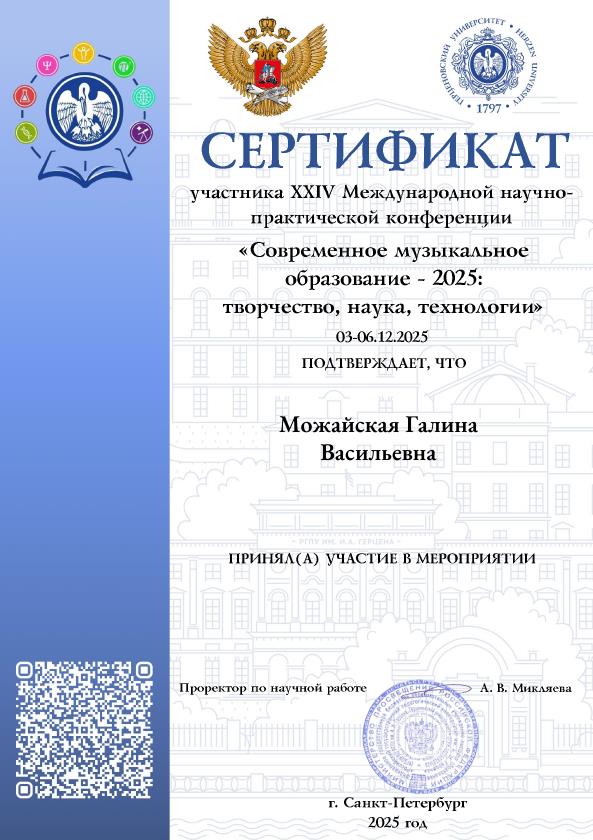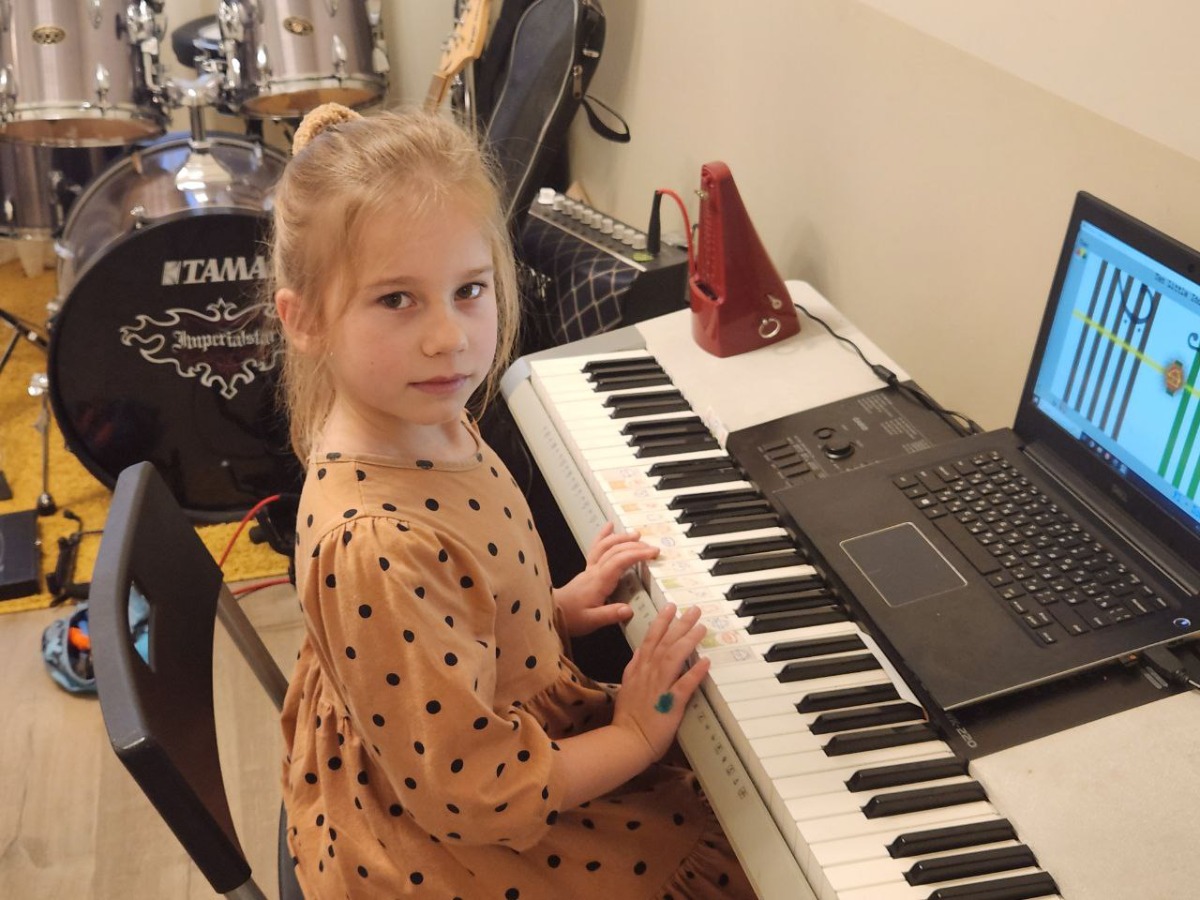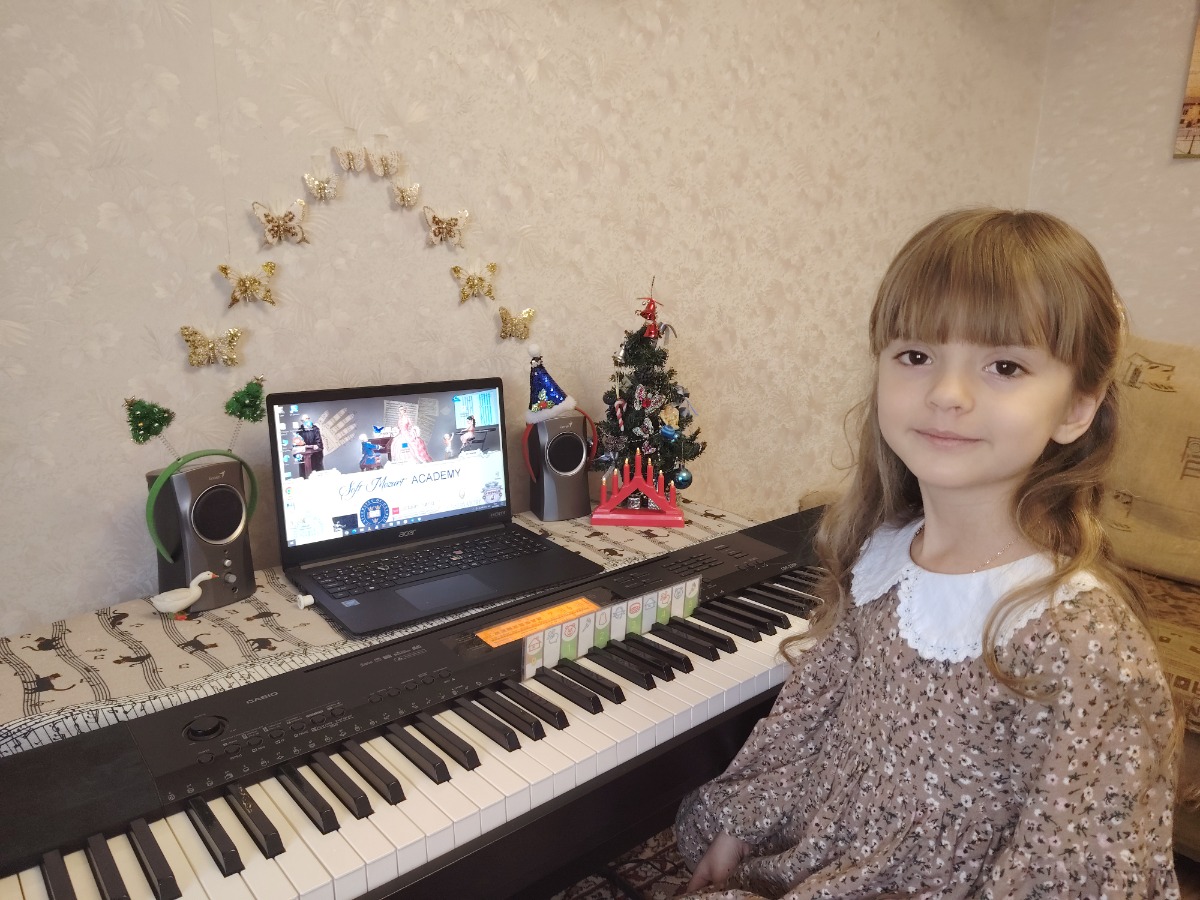Get Connected!
Come and join our community. Expand your network and get to know new people!
Седьмая медаль Академии Софт МоцартГордимся нашим Акимом!
Сегодня — день большой победы!
Наш студент Аким Можайский успешно завершил семь ступеней музыкального Лада в Академии Soft Mozart® и удостоен Медали Курьера — VII ступени! ??
Это значит, что Аким:
✔ прошёл весь начальный цикл обучения музыке
✔ освоил навыки чтения нот, слухового восприятия, ритма и игры
✔ проявил настойчивость, дисциплину и талант
✔ стал настоящим проводником музыкальной мысли
✨ За каждый уровень он получил свои награды:
? Медаль Тоники
? Значок Охранника
? Медаль Фрейлины — Мажора и Минора
? Орден Принцессы Субдоминанты
⚔ Орден Короля Доминанты
? Медаль Авдруга
И вот - последняя ступень гаммы ПЕРВОЙ ОКТАВЫ - Курьер.
Теперь Акима ждёт новый этап — бакалавриат Академии Soft Mozart®:
? изучение музыкальной педагогики
первые шаги в психологии и нейропедагогике
? освоение Второй Октавы и продвинутый репертуар.
Но главная победа Акима — это его доброе сердце и стремление помогать другим. Он уже стал лидером движения «Научи хорошему», вдохновляя детей и взрослых развиваться через музыку!
Давайте все вместе поздравим Акима с этим значительным достижением и пожелаем ему новых вершин!
Аким, ты — гордость Академии!
Пусть музыка всегда ведёт тебя к большому и прекрасному будущему!
Елена Владимировна Хайнер
www.youtube.com/watch?v=tg4OL2Fbt-Q&t=3s
Read More...
Выступление Ксении.
Это её первое выступление в Академии Софт Моцарт.
Преподаватель: Можайская Г.В.
Jingle Bells
youtu.be/5_l14SBE2Kc
Read More...
Студенты Академии Софт Моцарт приняли участие в V Краевом Арт-фестивале лиц с ограниченными возможностями здоровья и инвалидностью, который проводится в целях создания
условий для творческой самореализации лиц с ОВЗ и инвалидностью средствами культуры и искусства.
Организатором V Краевого Арт-фестиваля является КГБПОУ «Бийский промышленно-технологический колледж» - Базовая профессиональная образовательная организация, обеспечивающая поддержку региональной системы инклюзивного профессионального образования инвалидов и лиц с
ограниченными возможностями здоровья в Алтайском крае.
www.youtube.com/watch?v=lgtRJELiwWE
www.youtube.com/watch?v=XgPSHwsyAWg
www.youtube.com/watch?v=dr65d-o5evg
Мои поздравления ребятам! Так держать!
Read More...
Сертификат за участие в XXIV Международной научно–практической конференции «Современное музыкальное образование – 2025: творчество, наука, технологии», организованной РГПУ им. А. И. Герцена (Санкт-Петербург) и Санкт-Петербургской государственной консерваторией им. Н. А. Римского-Корсакова.
Видеодоклад: Научная музыкальная педагогика в инклюзивном обучении: эмпирические данные об эффективности Soft Mozart для учеников с особыми образовательными потребностями.
Данный доклад посвящён роли научной музыкальной педагогики в инклюзивном обучении учеников с особыми образовательными потребностями (ООП). Особое внимание уделяется возможностям системы «Софт Моцарт», основанной на современных нейронаучных и педагогических принципах. Представлены эмпирические данные, свидетельствующие о положительной динамике развития моторики, зрительно-моторной координации, внимания, восприятия и эмоциональной сферы при использовании данной системы. Подчёркивается значимость внедрения инновационных технологий, повышающих эффективность инклюзивного образования и способствующих социальной интеграции учеников с ООП.
www.youtube.com/watch?v=TaRTTiL0FRo
Read More...
ПРЕДЛАГАЕМ ВАШЕМУ ВНИМАНИЮ:
1). П. И. Чайковский. Первый концерт для ф-но с оркестром (фрагмент 1-й части).
www.youtube.com/watch?v=Q2mm3lYn4mo
Read More...
Огромное спасибо, Галина Васильевна!
Read More...
Дима занимается музыкой с 8 лет, уже имеет медаль королевы Тоники и не собирается останавливаться на достигнутом.
Read More...
Здравствуйте.
Открываю дневник Полины на 2025/2026 учебный год.
Полина только начала свой путь в изучении программы софт Моцарт, но уже делает быстрые шаги в ее освоении. Об этой системе музыкального образования нам рассказала наш педагог по музыке Татьяна Юрьевна, по ней же учится старший брат. Полина очень музыкальная девочка: она дополнительно занимается танцами в стиле рок-н-ролл и поет в школьном хоре.
В этом учебном году мы планируем получить диплом С уровня.
Read More...
Приветствуем всех участников международного концерта "Бал Бабочек".
Андрей занимается у педагога Егоровой О.М. 5 лет 1 раз в неделю.
Последние два года дистанционно.
За эти годы участвовал во всех онлайн концертах Академии Софт Моцарт.
Read More...
Выступление Олеси.
Это пятое её выступление в Академии Софт Моцарт.
Занимается онлайн.
Преподаватель: Можайская Г.В.
1. French Song, folklore
youtu.be/hF1bKd-lX6w
2. Jingle Bells, folklore
youtu.be/MGUaqFEz3yk
3. A Christmas tree was born in the forest. Krasev
youtu.be/cykqLUQ_ZGw
Read More...
Выступление Сони.
Это первое её выступление в Академии Софт Моцарт.
Преподаватель: Можайская Г.В.
Hot Cross Buns
youtu.be/2ZKGAoCTEA4
Read More...
Алиса приняла участие в проекте "Научи хорошему!" Дети учат...
Она познакомила папу с программой Софт Моцарт, рассказала о нотном стане и мультимедийных подсказках:
youtu.be/utpmaf46vgM
Результат папы: песня Булочки Р3
youtu.be/y_GQBAFQpq0
Read More...
ПРЕДЛАГАЕМ ВАШЕМУ ВНИМАНИЮ:
1). М. Красев «Ёлочка»
www.youtube.com/watch?v=WN0Pqd6Ktjs
2). «Старый добрый Святой Николай»
www.youtube.com/watch?v=pUzU7aVLTn4
Read More...

